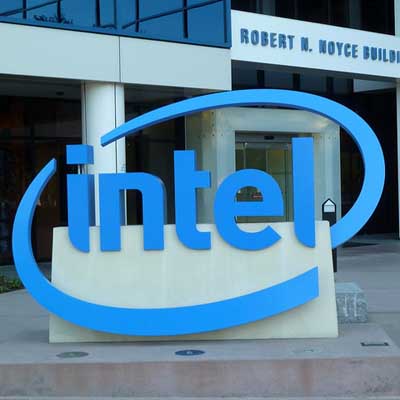Intel Says Next-Gen 10nm CPU Not Coming Until Holiday 2019

Intel said its next-generation, 10-nanometer client processors won't launch until holiday 2019, setting the stage for a highly competitive year with archrival AMD.
The comments about Intel's 10nm CPU were made on Thursday during the company's second-quarter earnings call. While the company boasted record revenues and accelerated sales, Intel's multi-year delay of 10nm products raises questions over whether its manufacturing issues will give AMD a significant advantage next year with the rival's equivalent 7nm server and client processors.
Bob Swan, Intel's interim CEO, also said the company's CEO search has no timetable but the board is "working with a sense of urgency."
With Intel's first 10nm products coming out a year from now, the company said it will focus on driving high-performance products based on the company's current 14nm manufacturing process, which has seen performance gains of more than 70 percent since it first started in 2014.
"As we look at 2019 across the client and data center space, we feel very good about our competitiveness with 14nm," Murthy Renduchintala, Intel's chief engineering officer, said on the call.
At the heart of the 10nm issue is the drive to make chips with greater transistor density, which improves performance and energy efficiency while enabling new capabilities. It was part of Intel's "tick-tock" model, which the company had adopted in 2007 to drive "continued innovations in manufacturing process technology and processor microarchitecture," according to its website. Intel then announced in 2016 that it would replace the "tick-tock" model with a three-phase model spanning process, architecture and optimization.
This cadence of updates between process technology and processor architecture has slowed in recent years due to manufacturing problems with the company's 10nm process. Those issues have given AMD an "unexpected" advantage, a senior AMD executive said in June. The company's CEO, Lisa Su, said AMD plans to first release 7nm server CPUs next year with 7nm client CPUs to follow.
That is the opposite approach Intel is taking. During the company's earnings call, Renduchintala said the company's 10nm client CPUs will hit shelves for holiday 2019 and that 10nm server CPUs will "shortly follow." He added that the gap between client and server releases will be shorter than past product cycles.
While Intel said its 14nm CPUs will help the company stay competitive, executives on the call also boasted about the company's growing portfolio of silicon products, which includes Intel Optane memory and solid-state drives, as well as the company's field-programmable gate arrays. Most recently, the company announced it will acquire eASIC, a maker of high-performance, low-power customizable chips.
"Our approach has really been to, over time, increasingly stitch those assets together" to compete, said Navin Shenoy, head of Intel's Data Center Group.
Intel hit another record for quarterly revenue with $17 billion in the second quarter, a 15 percent increase over the same period last year. The company's data-centric businesses, which includes Data Center Group and Internet of Things, grew 26 percent year-over-year to $7.9 billion while Intel's PC business grew 6 percent year-over-year to $8.7 billion. Both the data-centric and PC businesses grew at a faster clip than the previous quarter.
The company's net income climbed to $4.9 billion, or $1.04 per share, compared to a net gain of $3.5 billion, or 72 cents per share, a year ago.
Within Intel's data-centric businesses, the Data Center Group led the way with a 27 percent year-over-year increase to $5.5 billion. The Internet of Things Group and Intel's memory group saw record quarterly revenue, growing 22 percent to $880 million and 23 percent to $1.1 billion, respectively. The company's Programmable Solutions Group, which includes Intel's field-programmable gate array products, grew 18 percent to $517 million.
Intel's stock price was down more than 4 percent after market close Thursday.